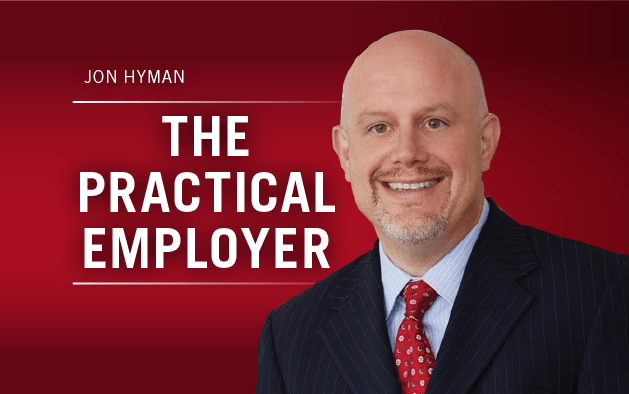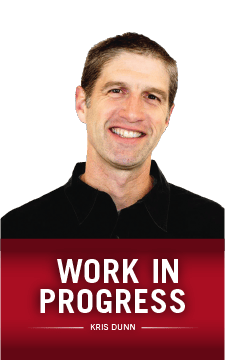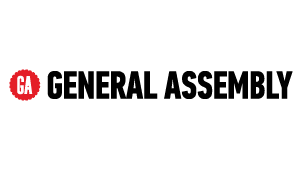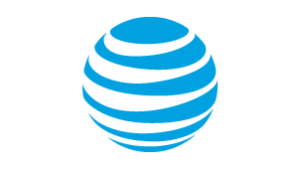Ask Lee Maxey to assess the state of partnerships between corporations and the United States’ higher education system, and his answer is likely to make any college administrator uneasy.
“Higher education has been conflicted in terms of its role and relationships to meeting its mission, and how that intersects with being useful in the current skills and knowledge needs of corporate America,” said Maxey, founder and CEO of MindMax, a learning services and technology firm, and an advisory board member for Chief Learning Officer magazine.
As colleges and universities have evolved, so have their relationships with the organizations that employ many graduates. According to interviews with corporate executives and college administrators, many higher education institutions employ offices meant to connect with industry, just as many corporations have executives whose job is to bridge connections with higher education.
The goal is to forge a link that will fill needs on both sides. Schools want graduates to find jobs, and companies want graduates to fill them. It is to this end that colleges and business schools partner with corporations in various ways. Many of these partnerships create lucrative custom degree programs at the graduate and executive level. Others invite employers to sit on university advisory boards to provide industry expertise to faculty.
These are in addition to informal engagements — such as meetings with professors and alumni — that administrators tout as pivotal channels faculty use to keep curricula abreast of industry. School administrators say these connections will produce a contentexchange that will make its way into the classroom, providing students with relevant skills they need to enter the business world.
But to Maxey and other experts observing the intersection of corporate learning and higher education, these partnerships are insufficient. Should chief learning officers meddle in university relations by trying to shape college curricula? Or should they remain focused on training the talent already under their employ?
Where Are the Skills?
In either case, there is a skills disconnect. More than half of CEOs said skills shortages are a significant problem for their companies, according to a 2014 survey from the Business Roundtable, an association of CEOs leading U.S.-based firms, and Change the Equation, a nonprofit skills gap advocacy group. Further, 33 percent of employers surveyed said general business skills is one of the major areas where retraining is needed once graduates enter the workforce.
The issue appears especially profound at the undergraduate level, where many students have a difficult time finding fulfilling employment after graduation.
According to government data, recent college graduates throughout the economic recovery remained among the most unemployed or underemployed demographics. Further, roughly 30 percent of recent college graduates with bachelor’s degrees are in jobs geared toward those with high school diplomas or associates degrees, according to the Center on Education and the Workforce at Georgetown University.
This is likely why some corporations are taking a more hands-on approach at the undergraduate level. In April 2014, The Wall Street Journal reported many corporations are making efforts to fund undergraduate programs to help partner schools shape curricula. For example, Northrop Grumman Corp. funded a cybersecurity program at The University of Maryland. In addition to designing the curriculum, the defense contractor is providing computers and paying for the cost of a new dorm dedicated to the program, the Journal report said.
IBM Corp. initiated a partnership with Ohio State University to train its students in big data analytics, a highly in-demand specialty with a dearth of skilled talent. “We’re working with over 1,000 universities worldwide on business analytics curriculum where we’re influencing the curriculum,” said Susan Puglia, IBM’s vice president of global university programs and vice chair of IBM Academy of Technology.
Brian Fitzgerald, CEO of the Business-Higher Education Forum, a group working to build partnerships between corporations and universities, told the Journal such arrangements are an encouraging next step in connecting academia to the job market.
Hand in Hand?
Not every school feels this connection is necessary. “I don’t think corporations are really dictating our curriculum in any way,” said Douglas Shackelford, dean of the University of North Carolina Kenan-Flagler Business School. He said UNC’s business school doesn’t have any arrangement where corporate partners are heavily involved helping to create undergraduate programs because the school hasn’t had difficultly placing graduates in jobs.
Instead, UNC uses other means to stay connected. For example, Shackelford cited a lunch meeting faculty held with a chief operations officer for a major North Carolina bank in November 2014. He said the school holds many informal sessions like this throughout the year where faculty and industry exchange information that eventually makes its way into the classroom.
“We were quizzing her, and she was giving us a lot of information that she probably wouldn’t talk about publicly,” Shackelford said.
Other schools, such as Penn State, aim to forge more strategic partnerships. Penn State’s Smeal College of Business approaches its connection with companies on a few different levels. Paul Poissant, director of the school’s MBA employerrelations, said one way is through a board of visitors. Industry executives participate in meetings at the school and provide input to faculty on market trends. Different schools within the university — including its business school — have different boards of visitors. “Their sole focus is not shaping academic content,” Poissant said, “but it’s one of the things that they do.”
Poissant also said the school has a number of academic researchers working with practitioners in industry “trying to push that field forward.” “And, of course, that greatly shapes what our faculty are able to bring into the classroom.
“To give an example, in one of our procurement classes we had some alumni who worked for Fortune 100 pharmaceutical firms who, after cleaning data [used at those companies], was able to give a complete data set to this faculty member who has been able to use it in class — so students were able to work with real data that they would encounter,” he said.
Ford Motor Co. engages with more than 20 schools — including the University of Michigan, Ann Arbor and University of California, Berkeley — for efforts that span product development to job training.
“We recruit at those schools. We have research programs with many of those schools. We also support with scholarships and through vehicle teams and other programs for students at those schools,” said Alison Bazil, manager for learning and development for Ford’s product development and quality organizations. “And with some of those schools we offer training courses, either online or in Dearborn [Michigan] to have those universities come and teach current employees some of the latest technologies and grow their capability here.”
For many companies, partnering with universities is a major part of their talent acquisition strategy. Like Ford, financial services firm Vanguard Group has partnerships with a number of institutions near its Malvern, Pennsylvania, headquarters in an effort to connect with students it may eventually recruit.
In addition to launching a custom MBA program with Drexel University, the company has a program called “Explore” to interact with students as early as their freshman year “to learn about what it takes to be successful in the business world,” said Karen Fox, Vanguard’s manager of university and recruiting partnerships.
“When you talk about skills gaps, we’re helping and fostering the development of those skills through on-site, experiential learning here at Vanguard,” Fox said. “We have regular schedule of activities that we run annually, and sometimes we’ll customize it for anindividual partner — i.e., schools — depending on what their needs are.”
Aside from Drexel, Vanguard runs its Explore program at Saint Joseph’s University and Temple University in the Philadelphia area, Fox said.
Arizona State University’s W.P. Carey School of Business has roughly 300 corporate partnerships. Amy Hillman, the school’s dean, said these partnerships include everything from advisory boards where CEOs and other executives participate in dialogue to shape course content to applied projects where business school students work on projects for organizations.
Some members of the school’s accounting faculty also have been known to take sabbaticals from the university to work inside major accounting firms — something Hillman said is influential in shaping course content once those faculty members return to the classroom.
“For a business school, we are only as good as our corporate partners,” Hillman said. “Professional schools like business schools are designed to meet the needs of specific professions.”
ASU also grabbed headlines last year when Starbucks Corp. announced it would begin offering its workers the opportunity to earn an online degree at ASU at a steeply discounted rate. The partnership, announced in June 2014, gives certain Starbucks employees who work at least 20 hours a week the chance to earn an undergraduate degree. Phil Regier, executive vice provost and dean of ASU Online, said that while connection with the Seattle-based coffee giant helps it from a recruiting and benefits perspective, it helps the university fulfill one of its missions as a public institution.
“We’re a public university; we have a public purpose,” Regier said. “Part of that public purpose is providing access to a wide swath of students.”
A Way Forward
Despite the many ways corporations and higher education have partnered, some in the adult learning industry say the effort isn’t as effective as it could be. One area of contention is the advisory board model. While creating university advisory boards made up of industry executives to provide input on curriculum is a good idea in theory, often the content exchanged during the meetings is superficial, said Pamela Tate, president and CEO of The Council for Adult and Experiential Learning, a nonprofit advocacy firm.
“A lot of those advisory board structures are not very useful,” Tate said. “In fact, I remember a company saying to me recently: ‘The typical advisory board meeting at this institution is we come in for lunch, the president comes in, talks to us about everything cool the college and the program is doing. Then someone in charge with the program tells us more things, then we get a tour of their newest facilities and equipment, and we’re done.’ ”
Tate said companies and universities need to be more collaborative in creating course content for partnership programs, instead of organizations simply adopting content universities already offer.
MindMax’s Maxey also said the advisory board model is ineffective. He contends the solution to the corporation-university disconnect requires large-scale changes to the higher education system. Chiefly, he pointed to the credit hour — where students’ proficiency in a course is measured by time spent earning a grade — as something in need of major reform.
He said competency- or proficiency-based degrees would be more efficient because students’ skills would be measured based on their actual competency and not time spent studying plus a grade. In theory, this would allow some students to earn degrees in a much shorter time period, therefore making access to higher education more available to the many students who work and go to school He said a task force in Washington, D.C., is currently pushing the idea because the credit hour model is federally regulated for state universities.
Though many corporate partnerships efforts appear to be an extension of companies’ talent acquisition operations, Tate and Maxey said chief learning officers have a role to play in these relationships.
Tate said the continued integration of humanresources — in which learning, talent acquisition and tuition assistance benefits are united — should give CLOs a bigger voice in connecting internal skills needs and collaborations between companies and universities.
“Right now, they’re split out pretty separately,” she said. “The CLO and the learning and development practitioners are over there, and the talent and recruitment side is over there, and the tuition and benefits side is over here. There are sort of three different legs to the stool, and they don’t connect. To have a successful CLO function you need them all to be together.”
Maxey said no matter how their organization is structured, CLOs should get out and bridge custom connections with universities themselves. “The ‘L’ in CLO should stand for leadership, not just learning,” he said. “If a CLO is truly an executive leader, they need to get outside of the organization, and be more than a steward for information and knowledge and learning inside the organization.
“Anyone who reaches the executive level in a big organization or corporation has a responsibility, and the higher you go up, the more external your focus becomes,” Maxey said. “The CLO function, and the CLO populations as a profession, needs to take strong leadership with higher education to make clearer requests to the community about what’s needed in the workforce.”
This story first appeared in Chief Learning Officer, a sister publication of Workforce. Comment below or email editors@workforce.com.


















